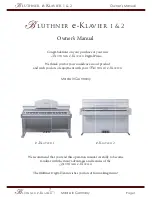
Model 4200A-SCS Parameter Analyzer Reference Manual
Section 7: Keithley Configuration Utility (KCon)
4200A-901-01 Rev. C / February 2017
7-13
SMU autorange method
The source measure units (SMUs) in the 4200A-SCS can make smart decisions when changing
range. There are many factors the SMUs calculate when they change the range. The SMU autorange
method allows you to determine which range change algorithm meets your needs. The available SMU
autorange methods are normal, high-speed, or high-resolution.
For the normal autorange method, the SMU makes a range decision at 50 percent of range. This
allows for a relatively high-precision measurement with a minimum of range disruptions to the
measurement. This mode works reliably in most conditions, and should be used unless there is a
precision, speed, or glitch condition that you are attempting to correct.
For the high-speed autorange method, the SMU ranges at 10 percent of range. This approximately
doubles the speed of the measurement. The SMU can provide 6-digit precision, but a digit of
precision is lost when using the high-speed autorange method. However, 5-digit precision is enough
for most applications. The high-speed autorange method is also the best choice if the device or test
configuration tends to exhibit unstable characteristics, such as oscillations or unstable device
readings.
For the high-resolution autorange method, the SMU ranges at 100 percent of range. This is the
slowest autorange method, but allows full precision of the SMU. This is also the lowest noise
autorange method. Occasionally, this method causes a small measurement glitch on a complete
sweep. In that case, changing to the high-speed autorange method often resolves the problem.
Select the autorange method from the
SMU AutoRange Method
list.
SMU standby range
When the SMU is not performing a test, it is in standby mode. When in standby, the SMU is
programmed to output 0 V, with current compliance set to the maximum on the standby current range
you selected. This allows the SMU to look like a virtual short circuit, and to prevent static charges
from building up. The default standby range for the SMU is 10 mA.
You may need to select a different standby range to tune or correct a test condition or result that is
less than optimal. For example, if the test condition always starts the measurement on the 100 µA
range, selecting the 100 µA standby range speeds up the measurement. This may also correct the
occasional data glitch that is seen on the first point of a sweep.
Set standby range by selecting the
SMU Standby Range
from the list.
Instrument Cards area
The Instrument Cards area shows which internal instrument card is installed in each slot.
















































